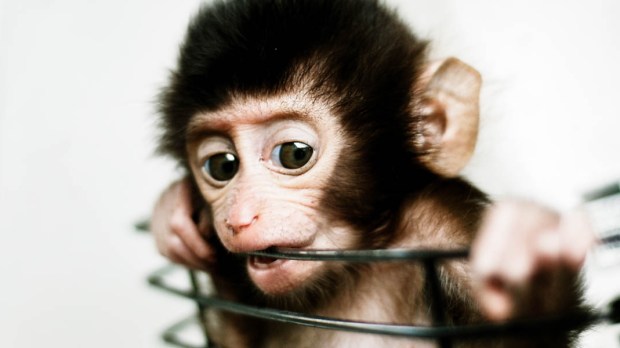Help Aleteia continue its mission by making a tax-deductible donation. In this way, Aleteia's future will be yours as well.
*Your donation is tax deductible!
The reported success in China in cloning a pair of monkeys may contribute in some way to the cloning of human beings, and therefore humanity must be vigilant, says a Catholic bioethicist in the United States.
The report out of the Chinese Academy of Sciences in Shanghai marks the first time that primates have been cloned with the technique that produced Dolly the sheep more than 20 years ago, according to the New York Times:
The long-tailed macaques, named Zhong Zhong and Hua Hua, were made from fetal cells grown in a petri dish. The clones are identical twins and carry the DNA of the monkey fetus that originally provided the cells, according to a study published in the journal Cell.
With the first cloning of primates, “We are closer to humans than we’ve ever been before,” said Dr. Leonard Zon, director of the stem cell program at Boston Children’s Hospital.
“Technologically, yes it could happen,” agreed John Brehany, Director of Institutional Relations at the National Catholic Bioethics Center. “The fact that they’ve been able to clone a primate that is more similar to human beings than we are to sheep has been a real hurdle, and to the extent that hurdle has been crossed it may have implications for someone who may want to clone human beings.”
Brehany said in an interview that the milestone is good news for those doing research on animals and trying to test medicines. “You want the population of animals you’re studying to be as similar as possible, so that your technique can be as uniform as possible, and when you go to make sense of the results, you’re dealing with as few variables as possible,” he said.
He noted that the Chinese researchers insist that the cloning was not done with a view toward advancing a similar accomplishment among human beings, but warned that now that this hurdle has been overcome, bioethicists must exercise even more vigilance.
“There’s a really high ethical bar to producing human beings,” he noted. “I think it’s technically against the law and against the research ethics of most people in the United States, at least the research ethics of most institutions.”
Separately, he argued, it is “worth asking” whether the process that led to the creation of Zhong Zhong and Hua Hua is an ethical form of research on animals.
“Arguably, should anyone who is trying to follow the natural law—respect the order of reality—have a sense of principled limits, if you will, or guidance on what should be done with animals?” Brehany asked. “The answer is yes. There are animal rights activists who certainly call for a high degree of protection for animals in research. It’s worth asking what would justify doing this.”
Based on the belief that man has been given stewardship over creation, man has “a certain authority to use animals and use the resources of the earth to benefit human beings so long as we are not causing needles cruelty or pain and so long as this is for a good reason,” he said.
If there’s a good reason to do the research, he said, “and there are means that are reasonably tailored to that end, then we could use them to do research on issues of particular interest to human beings because it’s hard to do the same research on human beings.”

